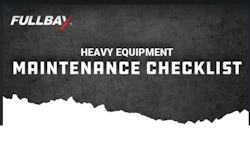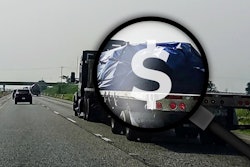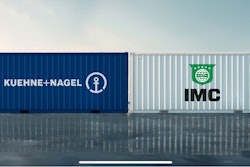Business fads and management strategies come and go, but technology is constantly moving on a disruptive path of innovation.
During the past 20 years, transportation management software (TMS) systems have evolved from running on mainframes, micro-computers, and on-prem servers to cloud-native platforms.
The architecture of TMS matters, but carriers and logistics providers are more interested in how modern technology can solve today’s business challenges.
When speaking to industry professionals who are looking to upgrade their core dispatch management system, the following seven attributes are the consensus for what defines a modern or ‘next generation’ TMS:
Fast, low-cost deployment
Deploying TMS systems traditionally has required companies to make large, up-front investments in hardware, software licenses and implementation fees. The software-as-a-service (SaaS) model for TMS removes cost and complexity from the get-go.
Switching to a modern, SaaS-based TMS does not have to be a long, drawn-out series of events. In many cases, vendors can manage the conversion process remotely, and it helps when the system has an intuitive and comprehensive transportation workflow.
Automatic software updates
Modern TMS platforms can deliver regular software updates through “micro” or “quick” releases. This stands in contrast to traditional, client-server systems where vendors release updates on a quarterly or annual cycle.
With a traditional version release cycle, transportation companies will spend days or weeks testing and training before they go live with new features and functions.
SaaS-based TMS suppliers release updates as soon as they are ready and can deploy them to all customers at once in a uniform manner. This makes it possible for companies to take advantage of new componentry earlier without steep learning curves.
Future-proof technology
Trucking and logistics companies may worry about deploying a TMS system when something better could be just around the corner. Cloud-native platforms alleviate this concern by having the ability to update components, such as database technology, as soon better alternatives become available.
Future-proof TMS systems will also be simple and configurable for end users. This includes having full-feature access from any device. Today, everyone expects to have a mobile and web experience that allows them to take work with them, wherever they go.
Turnkey integrations
Connectivity is one area where legacy TMS platforms often fall short. Integrating a TMS with complimentary systems like ELDs, trailer tracking, electronic payments and accounting software is critical to make the most of an investment. These integrations should not incur costly service fees.
Modern TMS systems also have greater flexibility to share data back and forth with custom or third-party applications to reduce cost and help companies build a competitive advantage by using their data in creative ways.
Intelligent driver workflow
Modern TMS platforms can extend the power of automation to drivers for a more rewarding work experience. Mobile apps can go beyond pickup and delivery tasks by giving drivers the ability to view their pay for upcoming loads, request time off, choose loads and perform other tasks inside or outside the cab.
Increasingly, fleets are adopting modern TMS platforms that come with powerful mobile apps that give drivers more control over their home time, work schedules and earnings.
Maximum security and readiness
The attributes of a modern, SaaS-based TMS would be worth little if motor carriers and freight brokers are not also getting better system reliability and performance than on-prem solutions.
One advantage of using a SaaS-based TMS is that motor carriers and logistics providers can back up their data in near real time and quickly switch to a different environment, if needed, to restore access to data and full TMS functions in the event of a disaster.
Business intelligence
Having access to a robust suite of self-service business intelligence (BI) tools is one of the most important features of next-generation TMS platforms.
Users at any level in a company should not have to ask their IT department to build reports. Accessing data and making intelligent decisions is everyone’s job, and BI tools empower people to make strategic decisions, regardless of industry experience or job tenure.
Some TMS vendors have skilled report writers and data scientists who create advanced reports that benefit all users for no added cost. A vendor may decide to create a model that identifies drivers who are at risk of quitting, for example. Management could be notified when certain patterns indicate a driver will quit based on changes in work schedules, pay, and other areas.
Trucking and logistics companies of all sizes already use SaaS-based applications for ELDs, trailer tracking, fuel payments, and other essential tools. Increasingly, they are using modern, SaaS-based TMS platforms that deliver affordable access to enterprise-class technology.
New developments continue to offer greater flexibility and more simplistic pricing models that make it easy to scale technology up or down to match a business’ changing needs.
Matt Cartwright is CEO of Magnus Technologies, an Austin, Texas-based provider of an enterprise grade SaaS-based TMS system for trucking and logistics companies.












